That lunch time, I strolled down Campos to buy what had become a lunchtime fave – boiled corn and Ube.
Unfortunately, neither was ready so I bought some raw, uncooked Ube and brought it back to my office. Where I proceeded to ‘cook’ it by steeping in hot water. And then microwaving and then back in hot water.
Ten minutes had elapsed and still my Ube were rock hard. The flesh which should have softened and turned to cream under the heat of boiling water hadn’t.
This would repeat itself again over the weekend when the flesh of Ube would refuse, even after a prolonged period of cooking to separate itself.
And what came to my mind was drupes – plums and peaches . About clingstones and freestones. Those that clung on and those let go of the seeds with ease.
At this point, I didn’t know that Ube, these pears were drupes till Wikipedia showed forth.
The fruit is an ellipsoidal drupe which varies in length from 4 to 12 cm. The skin of the fruit is dark blue or violet, whereas the flesh is pale to light green. The tree flowers at the beginning of the rainy season and bears fruits during 2 to 5 months after flowering. There are two variants of Dacryodes edulis: D. e. var. edulis and D. e. var. parvicarpa. The fruit of D. e. var. edulis is larger and the tree has stout, ascending branches. D. e. var. parvicarpa has smaller fruit and slender, drooping branches; Source
Its the weirdest thing, and for a while I was a bit confused about which one was freestone or clingstone…don’t ask me why, I dunno. But here I am. Now I suspect the nature – free or cling is the result of a genetic ‘defect’.
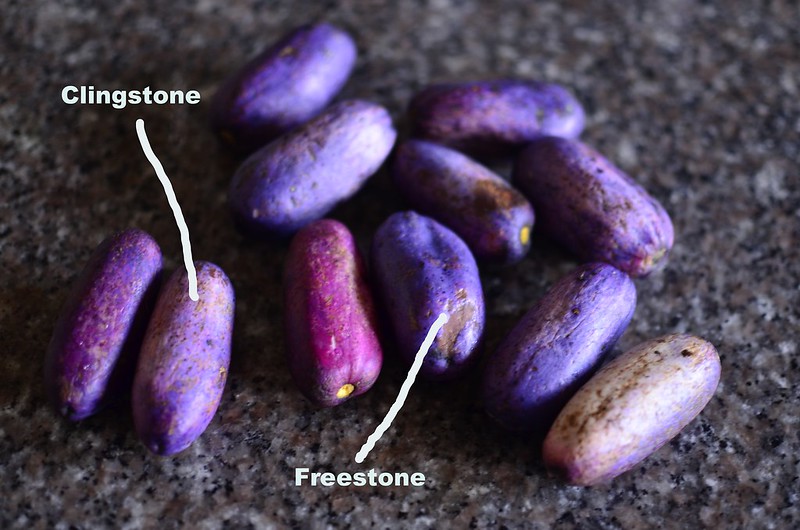 If you take a cross section through the fruit, you’ll find a hard, filled seed. For the clingstone variety – the core of the seed is ‘full of segments’…
If you take a cross section through the fruit, you’ll find a hard, filled seed. For the clingstone variety – the core of the seed is ‘full of segments’…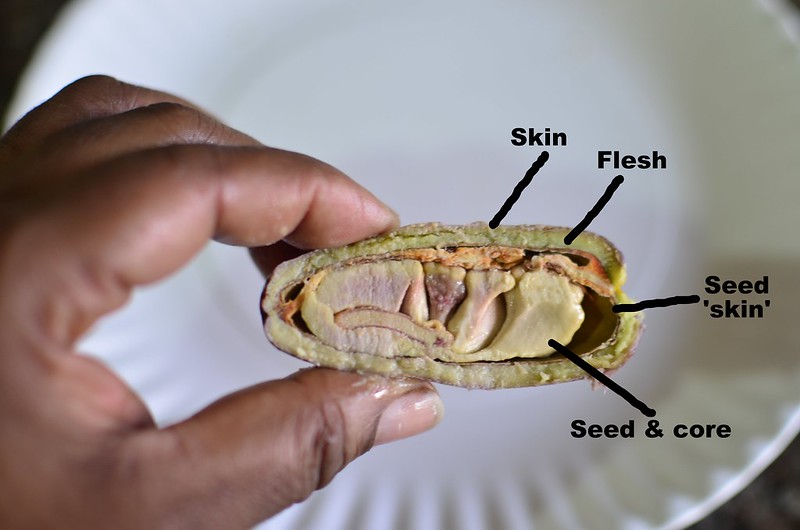 …while for the freestone variety, the core of the seed is somewhat hollow.
…while for the freestone variety, the core of the seed is somewhat hollow. 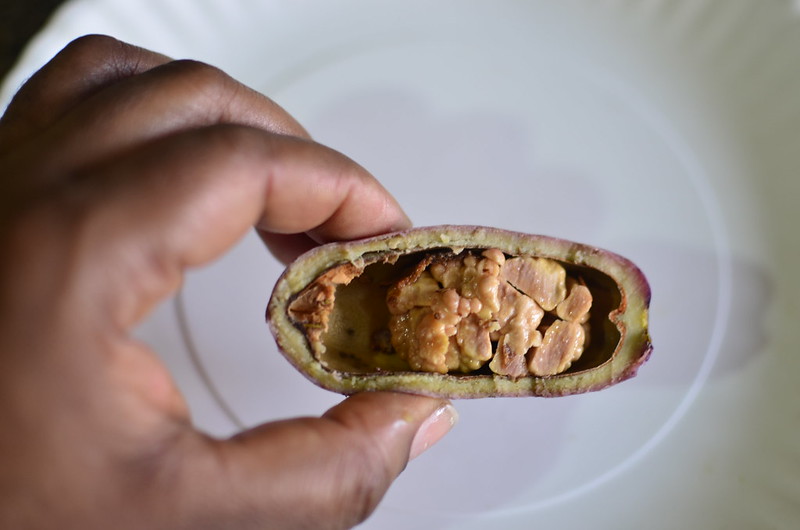
Clingstone versus Freestone
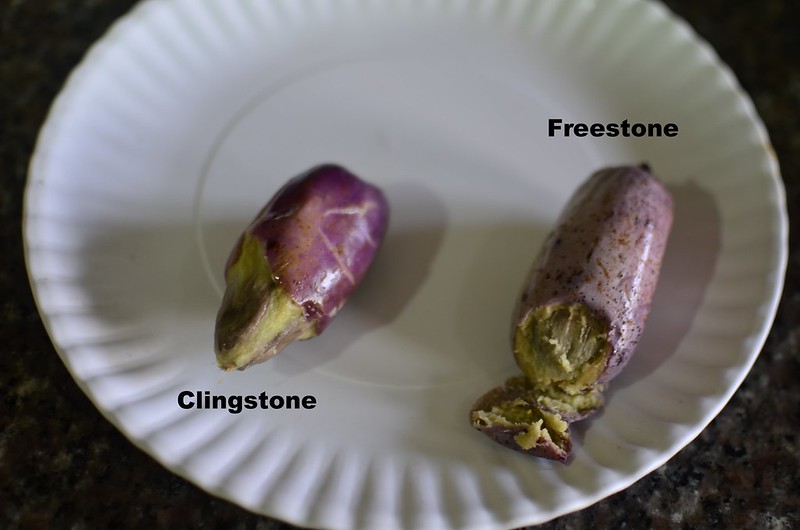
Shape & Size
The ‘clingstone’ fruits tended to be slim and uniform in shape, an average of 4cm wide, compared with the freestone which were wider, about 5+ cm.
When Cooked
The flesh of the clingstone split and softened while that of the freestone did not split. The freestone tends to have really thick skin.
Attempts to peel the flesh off left bits ‘clinging’ to one variety and coming clean off the other. Which is which :-)?
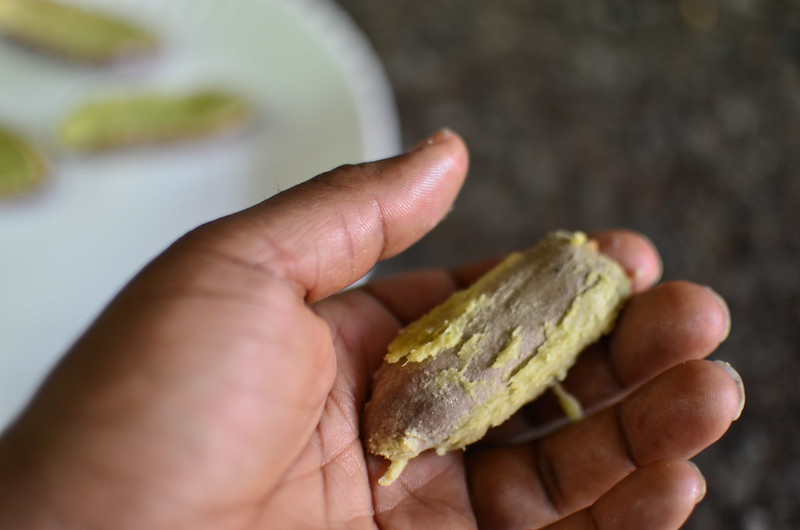
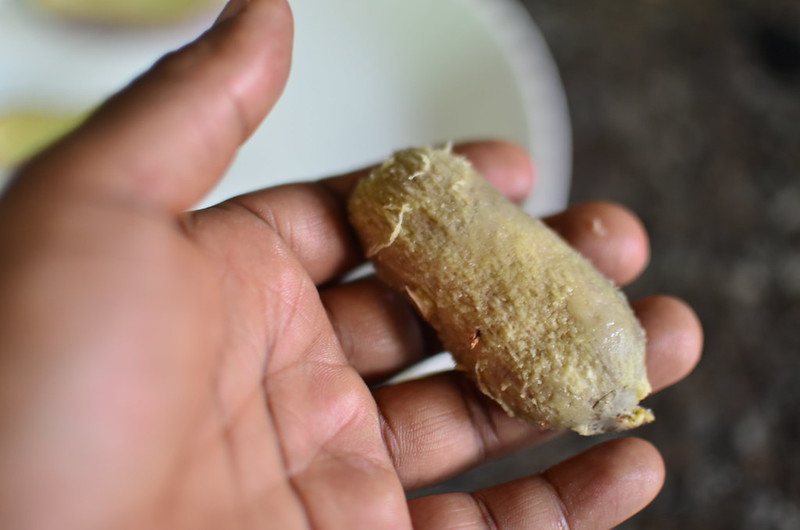
To eat
The flesh, as expected clung to the clingstone variety – soft skin, creamy and best sucked/ licked off. The freestone variety tended to have chewy skin and more fibrous flesh which didn’t melt-in-your-mouth.
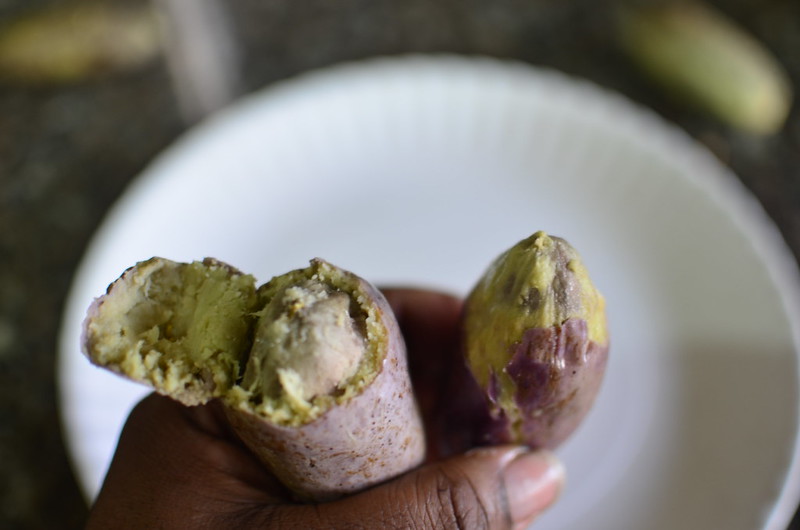
When to use the clingstone variety
Great for pureeing – dips, etc.
Results in smooth, creamy dip – more green colour than grey.
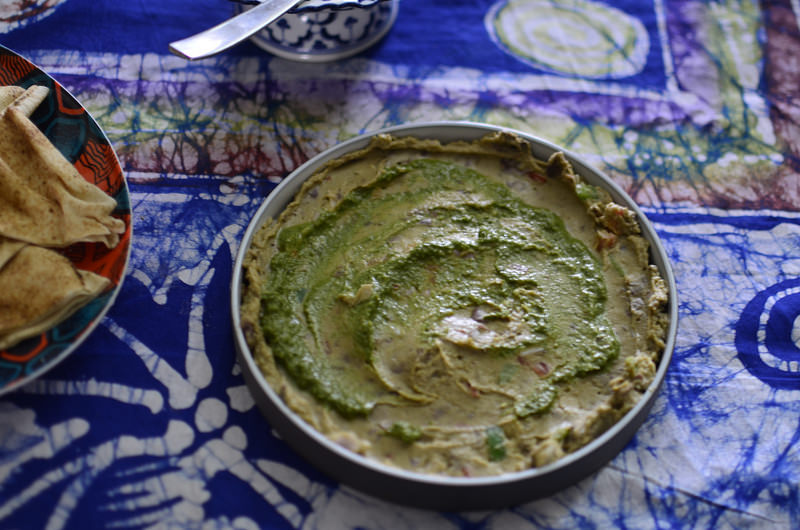
When to use the freestone variety
Great for stuffing – really bitty when pureed. I passed it through a sieve and the distinctive taste of the ube was lost. The colour ends up more grey than green.
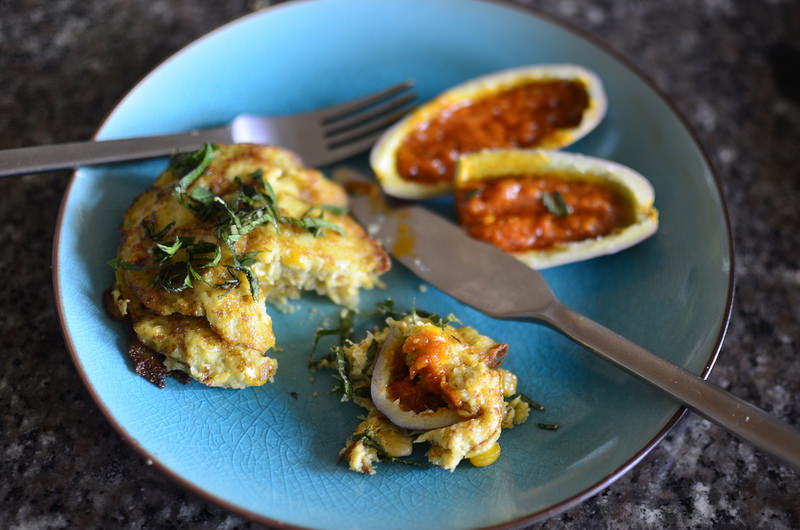
So yes, my study of drupes and ube.
I’ll do some more next season xxx[wpurp-searchable-recipe]Ube African Purple Pear: Freestone & Clingstone – – – [/wpurp-searchable-recipe]


Leave a Reply